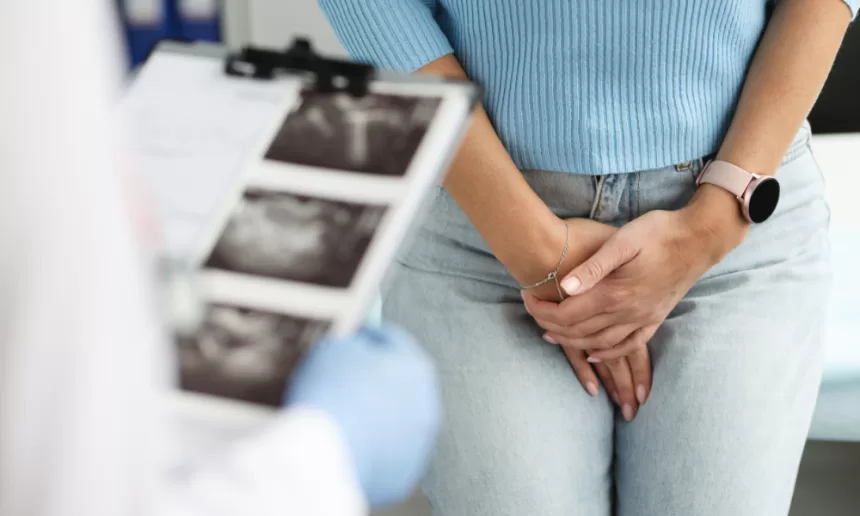Uterine Polyps Removal
Introduction
Uterine Polyps Removal (or endometrial polyps) are small benign soft lesions arising from the epithelium lining the uterus [endometrium]. These polyps are frequently asymptomatic but may be symptomatic (e.g., abnormal menstrual bleeding, infertility, pelvic pain). Sometimes, doctors need to remove uterine polyps that can also be premalignant or malignant.
Uterine polyp resection is a safe and efficacious technique to relieve symptoms, enhance fertility, and decrease the risk of complications. Due to advances in minimally invasive approaches, surgeons have shortened this operation, reduced the pain, and shortened the recovery period.
What is Uterine Polyps Removal?
Uterine polyp removal consists of the surgical resection of polyps on the uterine mucosa. This technique, routinely performed by hysteroscopy, is minimally invasive and enables very fine surgical removal of polyps without damage to the surrounding tissue.
The treatment is ideal for women experiencing symptoms caused by polyps or those undergoing fertility treatments where the presence of polyps could hinder success.
Why is Uterine Polyps Removal Needed?
Uterine polyps removal is recommended for women with:
- Irregular Menstrual Bleeding: Heavy, prolonged, or unpredictable periods caused by polyps.
- Infertility: Polyps interfering with conception or implantation.
- Postmenopausal Bleeding: Atresia and significant bleeding outside the menopause, which can be associated with polyps.
- Pelvic Pain or Discomfort: Pelvic pain or pressure due to large polyps.
- Suspected Malignancy: Polyps that appear suspicious during imaging or biopsy.
- Recurring Miscarriages: Polyps also interfered with the uteroplacental environment to support a normal pregnancy.
Types of Uterine Polyps Removal Procedures
- Hysteroscopic Polypectomy: A minimally invasive technique involving the use of a hysteroscope (rigid, lighted tube) for viewing and resection of the uterine polyps.
- Dilation and Curettage (D&C): It refers to the dilation of the cervix and sampling of the endometrial lining for the removal of polyps.
- Hysterectomy: Removal of the uterus; typically reserved for cases where polyps are recurrent or associated with cancer.
- Medications: With hormonal treatment (e.g., progestins or gonadotropin-releasing hormone agonists) the polyps may temporarily regress but do not lead to a permanent regression.
Procedure Steps
- Pre-Surgery Evaluation:
- Pelvic Ultrasound: Identifies the size, location, and number of polyps.
- Hysteroscopy: Displays directly the uterine cavity for better diagnosis.
- Biopsy: Ensures that the polyps are benign.
- Blood Tests: Evaluate overall health and readiness for surgery.
- Anesthesia:
- It is applied by local, regional and/or general anesthesia based on the complexity of the procedure.
- Surgical Process:
- Hysteroscopic Polypectomy:
- The hysteroscope is introduced into the uterine cavity by way of the cervix.
- Polyps are removed using surgical instruments or electrocautery.
- Dilation and Curettage (D&C):
- The uterine mucosa is seeking to debulk polyps and submucosal tissue.
- Closure and Monitoring:
- Because hysteroscopy does not require any incision, doctors do not need to close any external wounds. They monitor the patient for any immediate complications.
Benefits of Uterine Polyps Removal
- Relieves Symptoms: Resolves abnormal bleeding and pelvic discomfort.
- Improves Fertility: Enhances the uterine environment for conception.
- Minimally Invasive: Hysteroscopic methods offer faster recovery and minimal scarring.
- Prevents Complications: Reduces the risk of recurrent polyps, miscarriage, or cancer.
- Quick Procedure: Hysteroscopic polypectomies are usually performed in less than 30 minutes to 1 hour.
Cost of Uterine Polyps Removal
- United States: $5,000 – $12,000
- United Kingdom: $4,000 – $9,000
- Thailand: $2,500 – $6,000
- India: $1,500 – $4,000
Best Hospitals in India for Uterine Polyps Removal
India offers world-class facilities for uterine polyps removal. Notable hospitals include:
Metro Hospital Faridabad:
- Renowned for advanced hysteroscopic procedures and gynecological care.
- Offers affordable and efficient treatments.
Fortis Healthcare (Delhi):
- Known for state-of-the-art facilities and experienced gynecologists.
Max Healthcare (Delhi):
- Offers a complete suite of minimally invasive surgical solutions with excellent performance.
Risks and Complications
Although uterine polyp removal is relatively safe, risks include:
- Infection: Rare and manageable with antibiotics.
- Bleeding: Minor bleeding may occur post-procedure.
- Uterine Perforation: Rare but possible during hysteroscopy.
- Recurrence: New polyps may develop over time.
- Scarring: Minimal with hysteroscopic techniques.
Recovery
Immediate Recovery:
- Hospital Stay: Hysteroscopic interventions are most often performed on an outpatient basis, meaning patients leave the facility on the same day.
- First Week: Mild cramping or spotting is common. Pain medications and rest are recommended.
Long-Term Recovery:
- 2 Weeks: Most patients resume normal activities, including work.
- Follow-Up Care: A follow-up visit guarantees final healing and recurrence screening.
- Fertility Monitoring: Women whose ability to get pregnant is impaired can usually start fertility treatment or natural attempts relatively soon after recovery.



